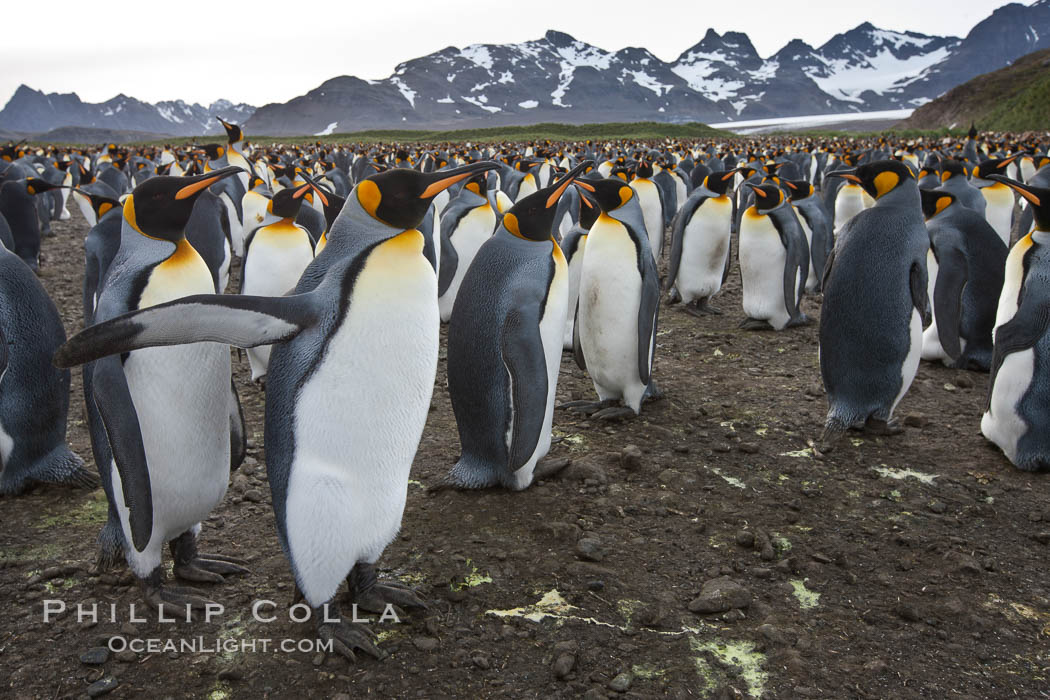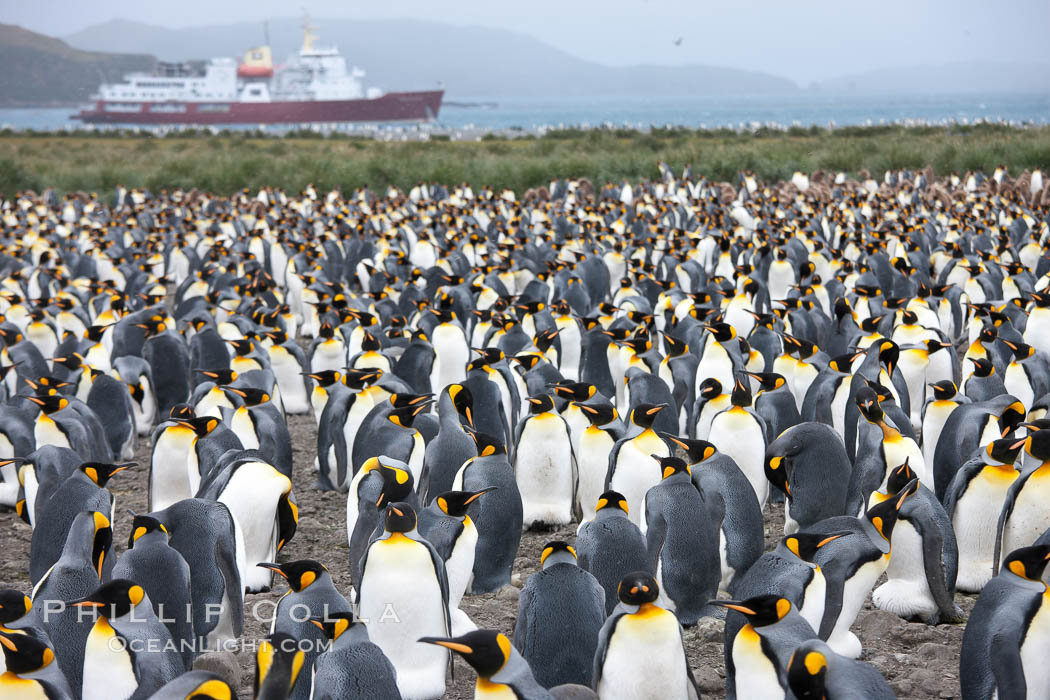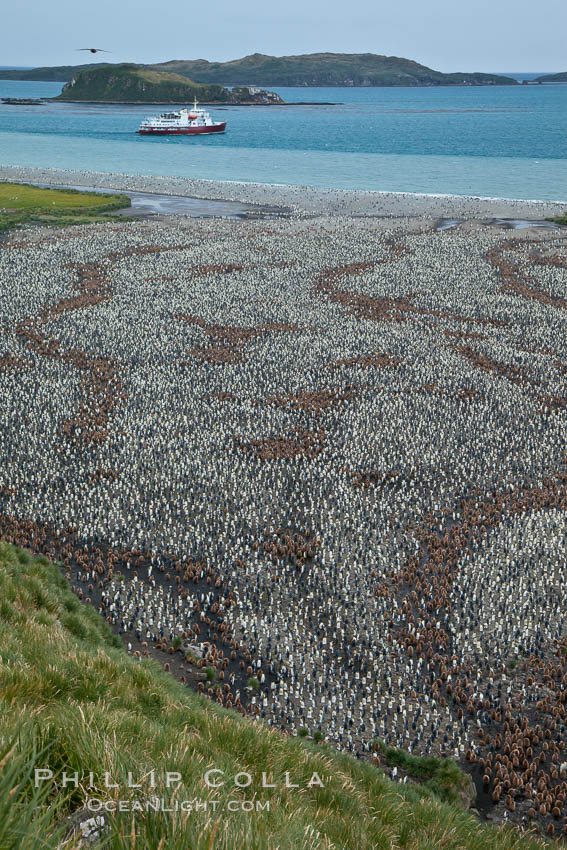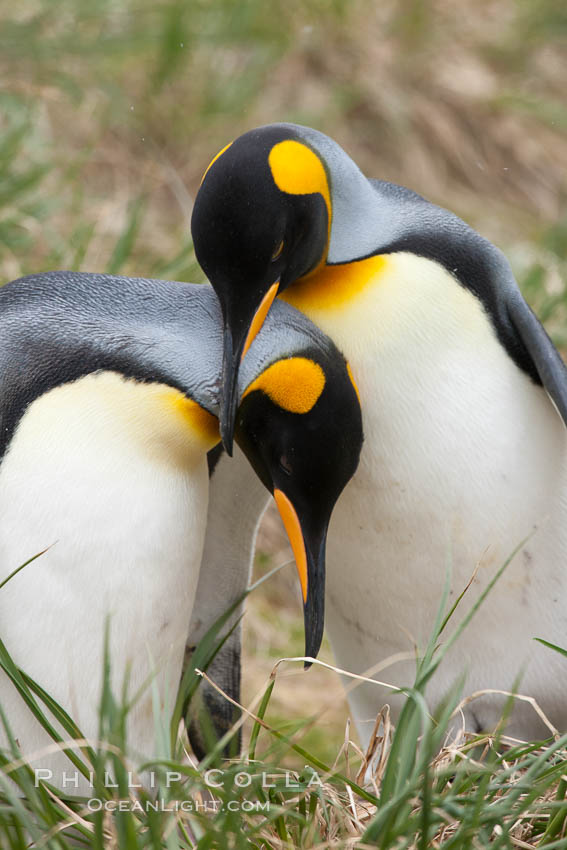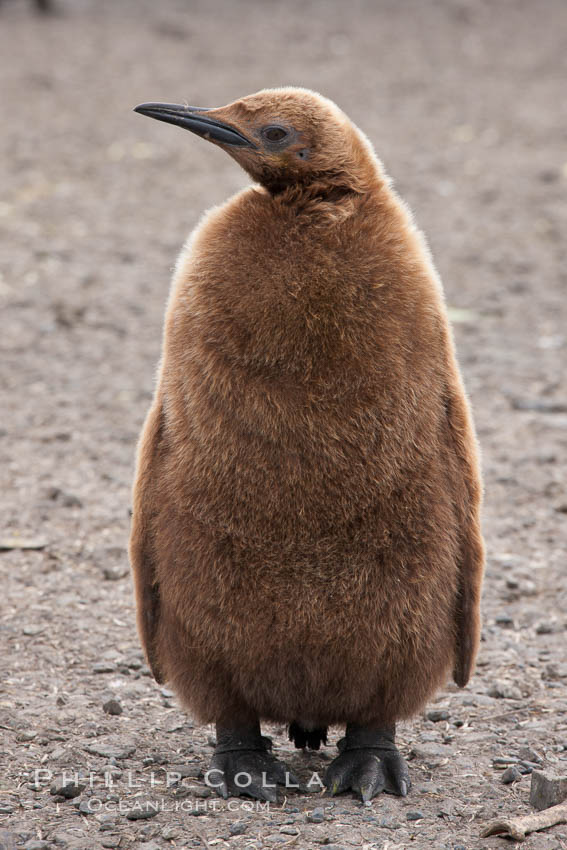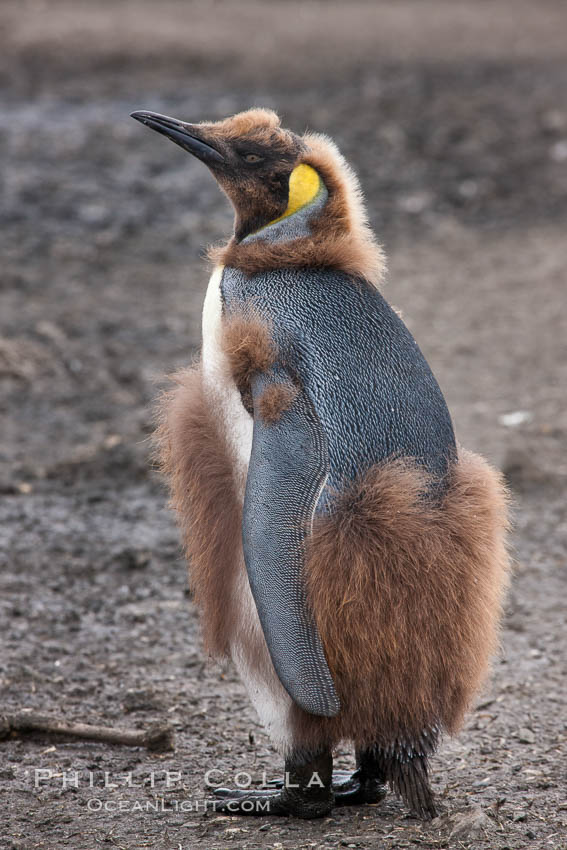Photos of Salisbury Plain and King Penguins in the Bay of Isles, South Georgia Island
Usually I am somewhat reserved in my written descriptions of places and things. In the following post, I am sure I have failed to communicate the profound depth of emotion that I experienced standing beside the King Penguin colony at Salisbury Plain. At times it was just overwhelming for me, all I could do was stand, watch, listen and soak it in. I tried to burn what I saw into my mind, because I realized at the time that what I was seeing was really special, and I did not want to ever forget it. I’ve seen a lot of fantastic natural history in my 20 years as a professional photographer, so when I say that something is a “must see” spectacle I do not say it lightly. Suffice it to say that Salisbury Plain is one of the must-see wildlife spectacles. I can’t wait to return.
This morning the weather is overcast but calm. The light is beautiful. The water is glass smooth and small waves lap along the edges of the Bay of Isles in which we are anchored. Snow-covered mountains line the horizon in almost every direction. We are offshore the long sand beach that fronts famous Salisbury Plain, site of one of the world’s major King Penguin (Aptenodytes patagonicus) colonies. To the left of the plain is Lucas Glacier, to the right Grace Glacier. A quarter of a million king penguins occupy Salisbury Plain, in various stages of nesting, molting, preening and egg laying. There is a constant flow of penguins into and out of the water. A broad plain extends in from the beach on which penguins and fur seals reside. While the fur seals and elephant seals are here in large numbers too, they are simply overwhelmed by the teeming masses of penguins. The king penguin colony itself seems to have fairly distinct margins that can be easily seen from afar, but as one nears the colony the boundary is less easily discerned.
Salisbury Plain on South Georgia Island is home to an immense rookery of King Penguins. It is a spectacular wildlife location, unequaled in all the world.
Image ID: 24682
Location: Salisbury Plain, South Georgia Island
We make a 6am landing and walk across the grassy plain toward the colony. The beach itself is so densely covered with animals that we cannot traverse far on the sand. As we approach the mass of penguins, we take a winding path to avoid the many single and small groups of animals, penguins and seals, that are scattered widely on the fringe of the main colony. There is a deep buzzing sound, separate from the sounds of the individual animals near us. The buzzing is the cacophony of the colony itself, and grows louder as we grow closer. Eventually we find the edge of the colony, and view it from the perimeter, standing in tussoc grass.
King penguin colony. Over 100,000 pairs of king penguins nest at Salisbury Plain, laying eggs in December and February, then alternating roles between foraging for food and caring for the egg or chick.
Image ID: 24388
Species: King penguin, Aptenodytes patagonicus
Location: Salisbury Plain, South Georgia Island
Icebreaker M/V Polar Star anchored in the Bay of Isles,offshore of the vast king penguin colony at Salisbury Plain.
Image ID: 24397
Species: King penguin, Aptenodytes patagonicus
Location: Salisbury Plain, South Georgia Island
It is a sea of penguins. Adults sitting on eggs (the eggs are not often visible, tucked below the penguin for protection from the cold), adults and juveniles moving toward to the beach or returning to find their spot in the colony after a foraging session at sea, and “oakum boys”, the yearlings that are covered in a thick, light brown plumage that clearly distinguishes them from the adults. The colony occupies a vast area of the plain and also extends up the shoulder of an adjacent hill. I walk to the back of the hill and hike up to the top. I had read that the climb through tussac grass was treacherous and tiring, but in truth the effort is not difficult and I reach the top in 20 minutes or so. The tussac grass on the steeper areas is actually helpful, providing a handhold for balance.
King penguin colony and the Bay of Isles on the northern coast of South Georgia Island. Over 100,000 nesting pairs of king penguins reside here. Dark patches in the colony are groups of juveniles with fluffy brown plumage. The icebreaker M/V Polar Star lies at anchor.
Image ID: 24402
Species: King penguin, Aptenodytes patagonicus
Location: Salisbury Plain, South Georgia Island
King penguin, mated pair courting, displaying courtship behavior including mutual preening.
Image ID: 24438
Species: King penguin, Aptenodytes patagonicus
Location: Salisbury Plain, South Georgia Island
On the summit, the view is astounding. I can see the entire colony from above. While individual penguins can be discerned in the mass, the impression from here is abstract, a canvas of silver, black and white penguins edged with green tussac grass. Veins of brown flow randomly through the expanse – these are oakum boys congregating in groups distinct from the adults. The Polar Star lies at anchor offshore. I shoot some photos and a few videos. It is now about 9am and the wind has started in earnest. I move to a few different vantages atop the hill to see the colony and surrounding bay and mountains from different angles. The wind increases and snow begins to fall. I’m glad I skipped breakfast and made the early landing, since from the whitecaps in the bay it is clear the visit may be terminated early due to the declining weather. I make my way down to the plain and again stop alongside the colony, listening to the buzzing. I’ve taken plenty of photos, and prefer to just stand here and admire the scene.
Oakum boys, juvenile king penguins at Salisbury Plain, South Georgia Island. Named ‘oakum boys’ by sailors for the resemblance of their brown fluffy plumage to the color of oakum used to caulk timbers on sailing ships, these year-old penguins will soon shed their fluffy brown plumage and adopt the colors of an adult.
Image ID: 24405
Species: King penguin, Aptenodytes patagonicus
Location: Salisbury Plain, South Georgia Island
Oakum boys, juvenile king penguins at Salisbury Plain, South Georgia Island. Named ‘oakum boys’ by sailors for the resemblance of their brown fluffy plumage to the color of oakum used to caulk timbers on sailing ships, these year-old penguins will soon shed their fluffy brown plumage and adopt the colors of an adult.
Image ID: 24406
Species: King penguin, Aptenodytes patagonicus
Location: Salisbury Plain, South Georgia Island
Oakum boys and juveniles are curious and often approach within a few feet, standing next to me and looking me over. A couple even give me a soft tap on the leg, flap their wings and cluck softly. I doubt they understand the difficult life that they will undertake soon. I feel priviledged to simply have them appraise me and find me interesting enough to occupy their attention and warrant their approach. By midday it is time to return to the landing. Snow is blowing horizontally and covering my camera to the point I can no longer see through the viewfinder. The staff is challenged to get everyone into zodiacs and through the waves to the boat. It is a wet ride and we take a wave or two over the bow of the small inflatable, but no real danger. Back on board I dry my cameras off and warm up with a hot lunch. It continues to snow, although the wind has lessened. Our afternoon visit to see Wandering Albatross at nearby Prion Island is looking iffy. The serious birders on the trip consider seeing Wanderers a high priority and will be disappointed if we have to scrub it. Perhaps we can go ashore after dinner if the weather improves. All I can say is that the weather here is changeable. We’ll see.
Next: Prion Island, South Georgia Island
Previous: Grytviken, South Georgia Island
Trip Index: Cheesemans Antarctica, Falklands and South Georgia
All “Southern Ocean” entries

